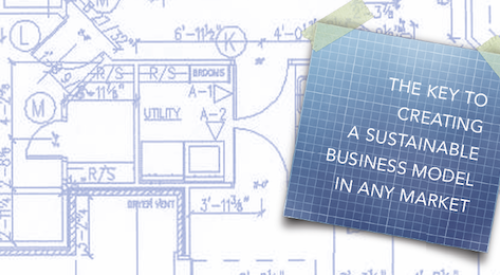| Heather McCune, Editor in Chief
|
Saturdays in the suburban community where I live are devoted to basically one thing — errands. Like a lot of the dual-income homeowners who are my neighbors, my husband and I each trundle off with a list of things that must be done before the next workweek begins.
Regular Saturday stops for me include the dry cleaner, allergist’s office, library, grocery store and, during summer, the nursery and flower shop. That last stop is necessitated by the never-ending cycle of buy flowers, plant in ground, forget to water, buy new flowers, plant in ground, forget to water. You get the idea.
This week as I moved from place to place I thought a lot about the companies I do business with and why. The reason: this month’s cover article by senior editor Bill Lurz. His feature, “Purchasing Power Plays,” analyzes the strategies home builders use to buy materials and labor and explains how each organization evaluates cost. What was interesting to me was that what seems straightforward — the price paid for a product or service — is anything but for builders today. I laughed out loud at this thought for at that moment I was passing by a dry cleaner — one closer to my home with lower prices and long hours — on the way to my preferred establishment farther away with shorter hours and higher prices. It seemed I, too, had my own definition of cost, and it involved a lot more than just price.
To borrow a phrase from PB columnist and industry guru Scott Sedam, initial price alone is pointless; total cost is the number that matters on the bottom line. Sedam likes to tell one of his favorite tales from his mentor, W. Edwards Deming, that demonstrates simply and eloquently the difference between the two numbers. When someone asked Dr. Deming how much the shoes he was wearing cost, his response was, “I don’t know. I haven’t finished wearing them yet!”
Total cost, according to Sedam, includes the costs of research, product development, site design, site development, engineering, planning, estimating, bidding, training, construction, inspection, and warranty and service (for at least five years from the date of completion). “Bidding processes that do not reflect costs beyond initial price are worse than inadequate,” says Sedam. “Builders who do not understand this are doomed to make the same mistakes over and over. Intellectually, most builders understand this difference, but their daily operating practices say initial price rules. Nothing changes.”
Sedam is never one to mince words — usually because he’s right — and I couldn’t help but think that his distinction between initial price and total cost isn’t very different from the turnkey bidding process that rankles so many builders today. As builders seek forever more ways to become more efficient managers of the new home building process (thereby delivering greater value to the home buyer), they see lots of dollars in unbundling materials from labor when bidding with the trades.
That is absolutely true; builders could reverse the upward trend of direct costs by purchasing materials directly rather than leaving it to the trades. Eliminate one markup, and it stands to reason costs go down.
The question that has to be asked — and the jury is still out on the answer — is will unbundling be a case of a lower initial price or a real reduction in total cost? Certainly the opportunity for sustained savings is there, but as industry legend Art Rutenburg points out, “We darn near have to teach our trades how to work with us.”
To realize lower total costs there has to be a true partnership in which information becomes a powerful tool for the trades as well as the builder. Only when the conversation isn’t about just price but also partnership can our industry build efficiency into processes on both sides.












